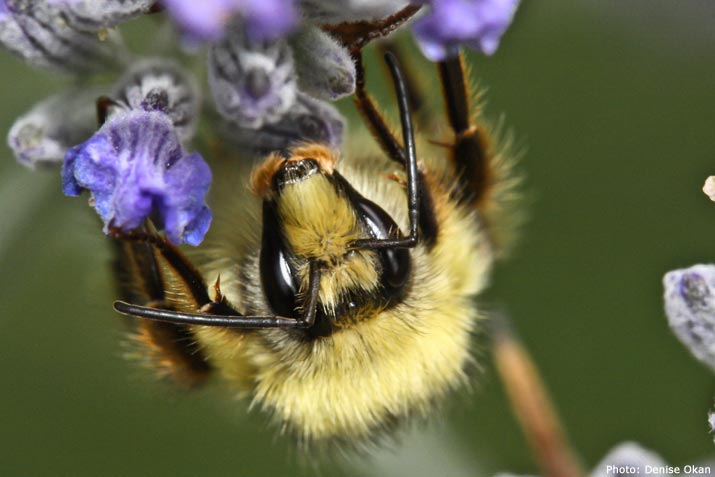Aug 8, 2013
April Overall

Did you know that approximately one-third of the food you eat is thanks to a pollinator? Yup! And bees do most of the work. Unfortunately many bees are under threat. One of the biggest threats they face is a loss of habitat. As native plants are being replaced with exotic gardens, grassy lawns and roads, our bees are having a rough time finding a place they can call home.
But you don’t have to wait for someone else to save them. Get that white steed ready and come to their rescue!
- Do think in colour! Bees are attracted to purple, blue, pink and yellow flowers.
- Don’t plant wildflowers that only bloom at one time. Ensure that there will be enough flowers for your winged friends from early spring all the way into fall.
- Do go big or go home! Plant as many native blooms as you can because bees are busy! They can visit 10 to 18 flowers in a minute and between 50 and 100 flowers in a single pollination trip!
- Do leave some soil undisturbed for bumblebees as they often make their nests in soil.
- Don’t discount the importance of herbaceous plants! Plants like crocus and primrose are especially helpful in the early spring when bees first begin gathering food.
- Do plant their favourites! Sunflowers, bee balm and goldenrod will go over well.
- Do plant your fruit and vegetable gardens with bees in mind! Bumblebees will pollinate tomatoes, eggplant, peppers, melons and berries.
- Do opt for short blooms. Bees have small tongues compared with other pollinators like hummingbirds and butterflies, so they prefer short flowers.
- Don’t plant flowers with tight buds. Bees have a hard time getting nectar from these blooms.
- Do choose clover! Honey bees will opt for white clover, while bumblebees prefer red clover.
- Do build a bee condo to give them a place to settle.






